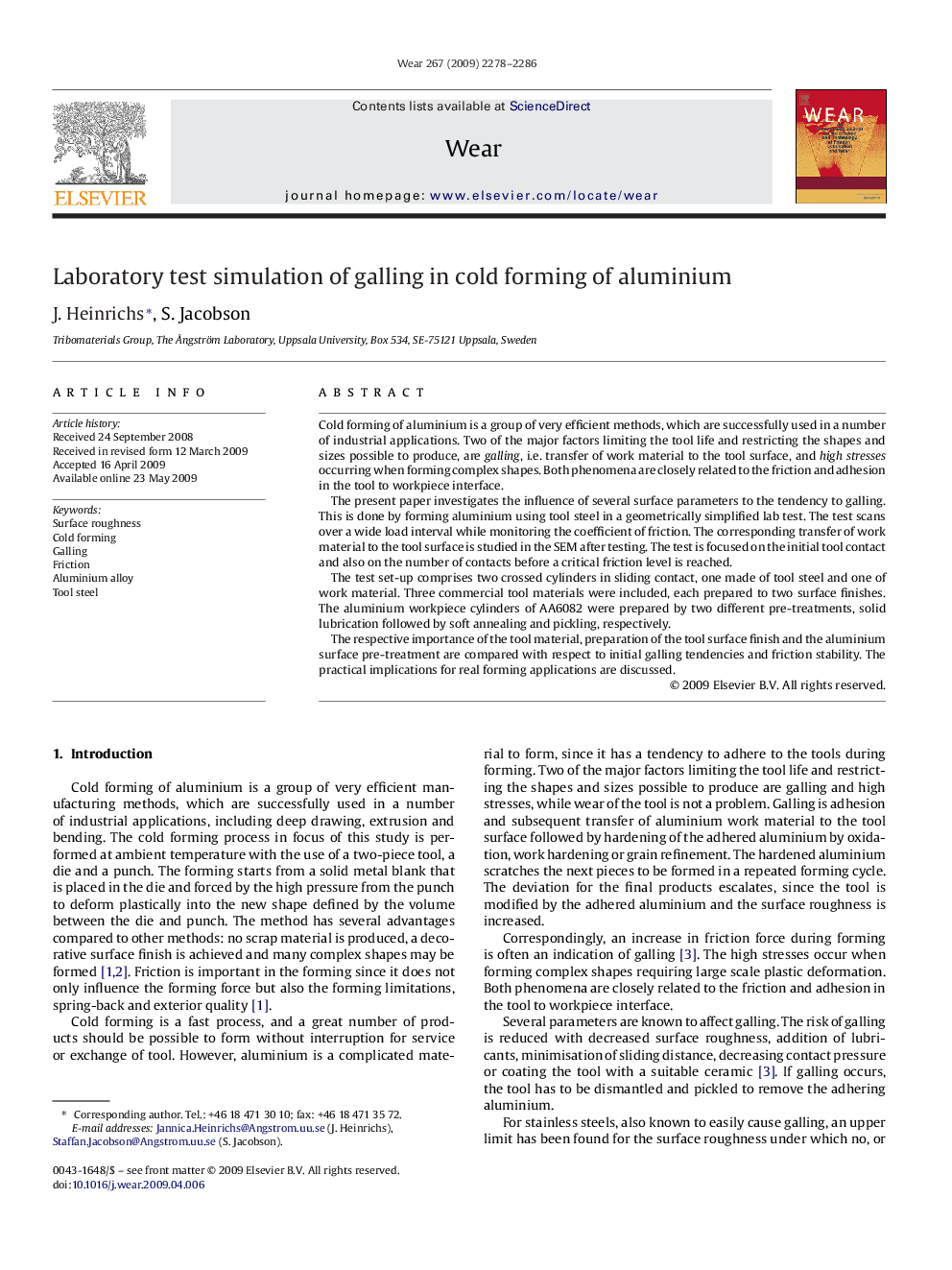| Article ID | Journal | Published Year | Pages | File Type |
|---|---|---|---|---|
| 619002 | Wear | 2009 | 9 Pages |
Cold forming of aluminium is a group of very efficient methods, which are successfully used in a number of industrial applications. Two of the major factors limiting the tool life and restricting the shapes and sizes possible to produce, are galling, i.e. transfer of work material to the tool surface, and high stresses occurring when forming complex shapes. Both phenomena are closely related to the friction and adhesion in the tool to workpiece interface.The present paper investigates the influence of several surface parameters to the tendency to galling. This is done by forming aluminium using tool steel in a geometrically simplified lab test. The test scans over a wide load interval while monitoring the coefficient of friction. The corresponding transfer of work material to the tool surface is studied in the SEM after testing. The test is focused on the initial tool contact and also on the number of contacts before a critical friction level is reached.The test set-up comprises two crossed cylinders in sliding contact, one made of tool steel and one of work material. Three commercial tool materials were included, each prepared to two surface finishes. The aluminium workpiece cylinders of AA6082 were prepared by two different pre-treatments, solid lubrication followed by soft annealing and pickling, respectively.The respective importance of the tool material, preparation of the tool surface finish and the aluminium surface pre-treatment are compared with respect to initial galling tendencies and friction stability. The practical implications for real forming applications are discussed.
